Of all the educational tools and techniques available to us, the personal stories of women who have been impacted by blood clots are the most successful in helping people to connect with the issues and understand the risks associated with hormonal birth control.
We will be sharing a number of these compelling stories with you in the upcoming year, beginning with that of our organization’s namesake Alexandra Rowan.
Hannah shares her experience with estrogen-based birth control and dangerous clotting.
I was 33 years old when I met my now husband. I had never taken birth control before, but began taking an estrogen-based birth control pill about six weeks before my wedding. During that time, I also traveled halfway across the country three times.
On Christmas Eve of 2023, four months after beginning birth control, I was admitted to the ER for shortness of breath and pain and swelling in my leg. I was diagnosed with a pulmonary embolism or blood clot in my lung and was ordered to stop my estrogen-based birth control. I was terrified when discharged that evening.
We spent the rest of Christmas Eve trying to find a pharmacy that could fill my starter dose of my anticoagulation medicine, or blood thinner, to treat my clotting. Two days later, as a result of the anticoagulation medication, I began bleeding…and bleeding…and bleeding. The soles of my feet were stained with blood. I went to the ER a grand total of four times with this issue and was finally admitted when my hemoglobin had dropped to 4.4. They infused 10 bags of blood. After five days, I almost lost my life with the 10th bag and they had to perform an emergency ablation to stop the bleeding. Due to my estrogen-based birth control, I also have lost my ability to have children only three months into my young marriage.
I want to help women understand the risk for blood clots linked to hormonal contraception and encourage them to make a choice that will be effective and, equally important, safe.

Savannah Bryant
Savannah shares her clotting experience after giving birth, stressing the need for improved awareness and diagnosis.
I had my son via C-section in April 2023. During my pregnancy, the doctors said that the leg pain I was experiencing was just sciatica. After having my son, I was having severe headaches, and the pain medicine I was given didn’t help. A week after my son was born I had three seizures. After being misdiagnosed by multiple hospitals – even staying a week in the neuro intensive care unit – they continued to disregard the obvious symptoms of blood clots.
After I was discharged, I went home and my condition grew worse and I couldn’t walk. I went to a third hospital, where they immediately started running tests and discovered that I had massive blood clots starting under my right breast going all the way down to my ankle, as well as multiple clots in both lungs. The next day they proceeded with surgery to remove the clots.
I now know that I have hereditary antithrombin III deficiency, protein S deficiency, and homozygous MTHFR gene mutation. The risks posed by these genetic clotting disorders were compounded by my pregnancy and C-section, both of which are major risk factors for blood clots.
Everyone should grow in their knowledge and learn about their potential risk factors for blood clots, including a family history of clotting. We need to do better in women’s healthcare and recognize the clotting risks unique to women throughout their lifetime, including pregnancy, estrogen-based birth control, and the treatment of menopause symptoms later in life with estrogen therapy. Women’s healthcare…please do better.
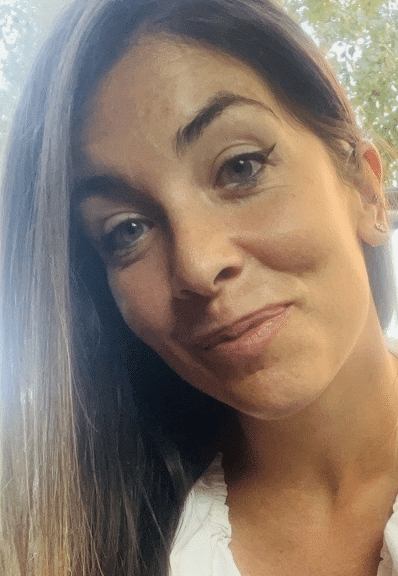
Diana
Diana shares her story to help amplify the importance of swift diagnosis when blood clots and their symptoms occur.
In 2022, at the age of 32 and competing in the national rowing championship, I had my first serious crisis. I had to ask for help to get out of the river, hoping that the symptoms thought to be asthma would go away. They didn’t pass, the doctors didn’t find any sign of a problem. I was healthy and the tests were perfect, the doctors said it was all an anxiety issue, but the pain over the weeks became unbearable and living another day with it was already a sacrifice.
Finally, in despair in the emergency room, the pain was so severe that a pulmonary embolism or blood clot in my lung was suspected. When confirmation arrived, the diagnosis was even worse, I had a massive bilateral pulmonary embolism as the clots had already aggressively affected both lungs. No doctor can understand how I survived almost two months in this condition or how I didn’t experience any serious complications.
The doctors suspect that I may have some genetic clotting condition, which they have yet been able to pinpoint, and, as a result, my pulmonary embolism was triggered by the use of hormonal birth control pills.
Thankfully, I was able to return to what I love: rowing. There are some physical consequences but fear and doubt are the most difficult to overcome. It has been hard.

Jen Childress
Jen shares her experience with blood clots following treatment of ovarian cysts with estrogen-based contraception.
In 2022, I went to my gynecologist with abnormal bleeding. After some tests, it was determined I had bilateral ovarian cysts. To attempt to shrink them, I was put on a short, two-month course of oral contraceptives. After having taken the pill for a month, I began to have what felt like anxiety but without a reason. My heart seemed to be racing, and it was hard to catch my breath. I also had pain in my lower calf. I had a pulse oximeter and found my heart rate was in the 130s!
I called my doctor to report it, who recommended I go immediately to the ER. There, they did tests, including a D-dimer, which was high. That led to a CT scan with contrast. I was diagnosed with bilateral pulmonary emboli (PEs). Both of my lungs were full of blood clots.
It scared me and my husband. I spent two days in the hospital and was released with a prescription for one of the newer direct oral anticoagulants. I could barely walk across my living room or climb stairs. Now I share the risks of clotting while taking estrogen-based birth control pills. My life changed dramatically with my PEs.
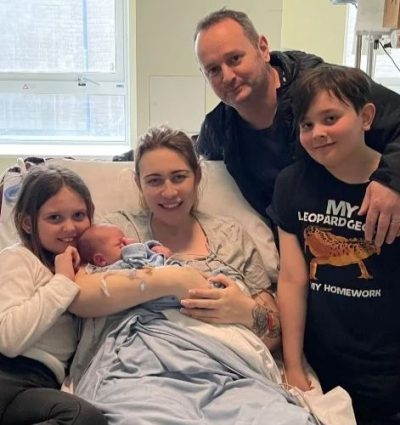
faye_codack july 2023
Faye recounts the dramatic impact of a life-threatening blood clot in the final weeks of her pregnancy.
The start of my blood clot journey was very unexpected. I was 34 years old and 32 weeks pregnant.
I was struggling to breathe, but I put it down to pregnancy and the baby sitting high. I had a routine appointment at the hospital to discuss my induction date, but as soon as the consultant saw me, she sent me straight to central delivery to get oxygen and scans. Diagnosis: Arterial thrombosis, bilateral saddle pulmonary embolism with right heart strain. Or, in more simple terms, I had a huge blood clot affecting my lungs and my heart.
I was administered thrombolytic medication, through my neck into my heart, that broke up the clot. I was in the intensive care unit (ICU) for three weeks and given different anti-clotting medications. During this time, I developed heparin-induced thrombocytopenia, as my blood platelets decreased to dangerously low levels.
There were times in the ICU when it was unclear if I would survive this experience. The doctors told my husband that they would try to save our baby, but he needed to prepare for the possibility that I might not survive.
I was on strict bed rest during this time. Due to how poorly I was doing, the doctors made the decision not to monitor the baby. As a mum, this was heartbreaking and every day I prayed that he would be okay.
The consultants in the ICU were going to transfer me from Plymouth to a different facility in London to have the clots removed, because they didn’t have the expertise to handle the complexities of my case. However, in the end, they decided that my heart was not strong enough to withstand the stress of that trip and I remained in Plymouth.
Thankfully, my baby boy was delivered at 36 weeks and he was okay. I, however, nearly passed away again, and was sent straight back to the ICU for additional monitoring. Knowing the risk of dying, I wrote all three of my children letters for all the special occasions in their lives that I might not be around for.
Today, I am thankful to have survived this experience and to be here for my family and to share my story to help others understand the life-threatening impact of blood clots.
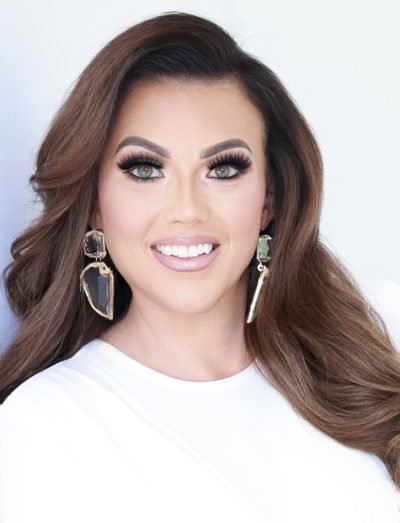
Kristin Billings
Kristin shares her personal experience with blood clots, stressing the role of her hormonal contraception as a risk factor.
I had been short of breath for several days, but since it was January at the time I just assumed I was getting sick or was just run down.
Over the weekend, I realized something was seriously wrong when I couldn’t make it up the stairs in my house without stopping a few steps up to rest, because I was so out of breath.
Lucky for me I work in healthcare, otherwise I don’t think I would be here today. That Monday morning, I mentioned the issues I was having to a coworker who urged me to be seen. After having a chest X-ray done and some blood work, I was told to go straight to the ER for a CT Scan, where it was determined I had multiple bilateral pulmonary embolisms or blood clots in both of my lungs.
The only reason for my blood clots that the doctors have been able to identify was my hormonal birth control, which I had restarted several months prior. Not once was I ever warned about the dangers of blood clots while taking hormonal birth control.
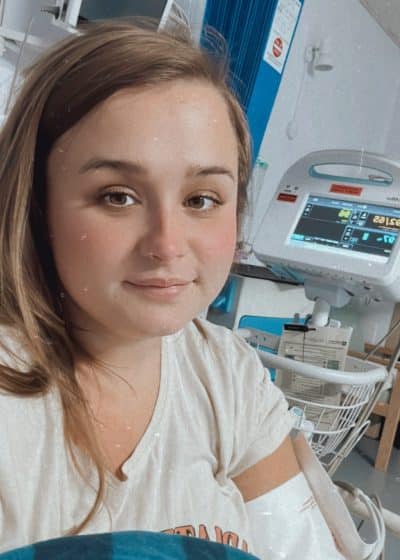
Sophie (2)
Sophie recounts her past experience with massive clots in her lungs, while today she still deals with lung damage.
In February of 2021, as I arrived to the hospital ward for my shift as a student nurse and healthcare support worker, I collapsed and was taken to the A&E or emergency department, where I was diagnosed with multiple massive pulmonary emboli or blood clots in my lungs, right heart strain, and lung infarction or the death of some of my lung tissue due to an inadequate supply of oxygen.
Through the night, I took a turn for the worse and was taken to the intensive therapy unit, where I remained for a week undergoing intravenous treatment with heparin, an anticoagulant or “blood thinner.”
The doctors explained to me that my clots were probably due to the hormonal contraceptive patch I had been using, combined with the fact that I was one year post-partum or one year out from having given birth. Scans also showed that there had been prior damage from a deep vein thrombosis (DVT) or blood clot in my right leg.
Unfortunately, my symptoms never improved and, in December of 2022, I had a right heart catheter that showed I have chronic thromboembolic pulmonary hypertension. My clots never fully dissolved, so I am awaiting further tests in London and I’m hoping to have a pulmonary thromboendarterectomy at the Royal Papworth Hospital to remove the clots from my lungs and improve my prognosis.

Shelby
Without warning, Shelby’s life was suddenly cut short by a blood clot. Her mother Carol shares her story.
Shelby was a beautiful, unique, outgoing person who enjoyed life fully. She loved outdoor activities, and spent her spare time snowshoeing, rock climbing, cross country skiing, fishing, hiking with her dog, and spending time with her friends.
At the age of 19, Shelby had been using hormonal birth control, specifically a vaginal ring, for 18 months. She had just filled her last prescription when she suddenly collapsed and died with no warning signs at all.
Sadly, Shelby had planned to stop using the hormonal birth control ring before she passed away, but it was too late. Her autopsy confirmed that she had a deep vein thrombosis (DVT or blood clot) behind her left knee that had dislodged and travelled to her lungs. Shelby’s cause of death was reported as a bilateral pulmonary embolism (PE or blood clots in her lungs) due to the hormones from the vaginal ring.
Unfortunately, Shelby had no signs or symptoms of her blood clot. Had she known more about the risk for blood clots connected to hormonal methods of birth control like the ring, she may have chosen to use a different form of birth control.

Eve
Eve was 21 years old when she lost her life to a blood clot. Her mother Melanie remembers her amazing daughter.
Our beautiful daughter Eve had a fall in July of 2019. At the time, she had been on the combined oral contraceptive pill for two years.
She was sent home after spending 23 hours in the hospital and was simply told to rest her leg. Eve had been complaining of numbness and pins and needles in her calf.
Three hours after her discharge, Eve went into cardiac arrest at home and never recovered. She died on the 21st of July 2019, at just 21 years old. Eve had a blood clot in her leg (deep vein thrombosis, DVT) and also in her lung (pulmonary embolism, PE).
There were many risk factors: A lower limb injury, a family history of DVT, and the combined hormonal contraceptive pill.
We miss her every second. She was an amazing daughter and sister, and by sharing Eve’s story I would like other young women to consider their options for contraception.
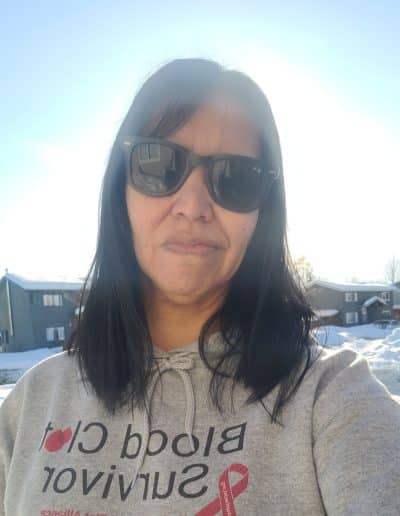
marion
Despite all she’s been through, Marion remains positive and is happy to share her story with others.
I discovered that I have three rare blood clotting disorders 15 years ago. Since that time, I’ve gone through a number of tests and all of the oral anticoagulants (“blood thinners”) have failed me.
I had a serious blood clot or deep vein thrombosis that led to multiple blood clots in my lungs (pulmonary embolism, PE). The PEs damaged my lungs and now only one of my lungs is working. I also have stage 3, borderline COPD (chronic obstructive pulmonary disease).
I am now taking low molecular weight heparin injections every 12 hours for the rest of my life, and see six different doctors monthly.
Despite these challenges, I am so glad to be here to tell my story.
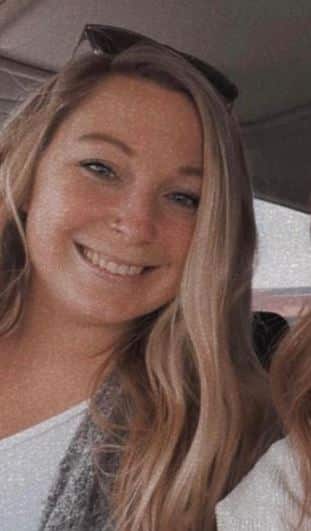
Kara2
Kara, who survived the “perfect storm” that led to a life-threatening blood clot, shares her story.
February of 2021 I went to work and began to have horrible pain in my shoulder that I brushed off as my purse being too heavy. I spent the next day with my friend and, six hours later, was rushed to the emergency room. I went to urgent care to have my “pulled muscle” examined, but I was fortunate to have a wonderful doctor who took the time to do a D-dimer blood test and stay late at the hospital to share my test results with me.
When the results came in, I learned that my clotting proteins were elevated by three times the normal level, signaling that I had a blood clot. A few hours later I learned that I had six clots in my right lung and was told that if I hadn’t made the trip to the emergency room I probably wouldn’t have lived to see the next day.
My doctors say that my case was like a perfect storm, with a combination of risk factors involved: I recently had surgery, also recently had COVID, was using hormonal birth control, and also have a family history of clotting.
Now, I’ll have to be monitored for the rest of my life, because the doctors were unable to pinpoint the precise reason for my clot. I spent months on medications and in therapy so that I can feel safe and healthy again.
Seeing the stories of other young women on the Rowan Foundation’s website brings me comfort, because I realize that other young women have shared this experience and I am not alone.
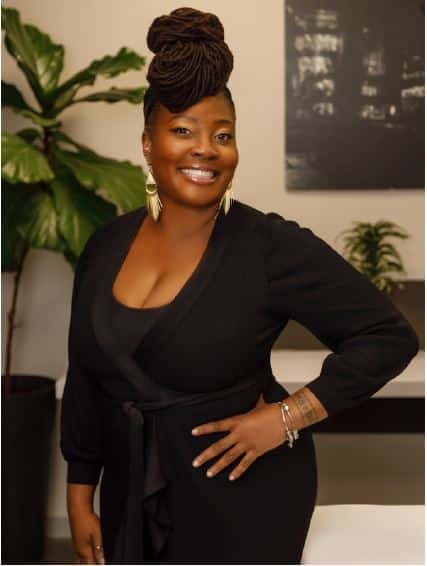
angella
Angella shares her journey from blood clot diagnosis to community advocate.
In 2019, I was first misdiagnosed with a groin strain at a Toronto hospital. When I returned to the same hospital three days later, I was properly evaluated and diagnosed with a blood clot in my leg and blood clots in both of my lungs. I spent the next three months in the hospital and then at a rehabilitation facility.
While at the Toronto health rehabilitation facility, I found my voice when I was invited to share my horrific hospital experience and to discuss ways to improve partnerships between patients and healthcare providers. Since then, I have participated in a variety of healthcare symposia and inter-professional education sessions, all while recovering mentally and physically from my blood clot experience.
In October 2022, I was asked to be the keynote speaker for Sinai Health’s Quality and Safety Symposium. Presently, I also serve as the co-chair and patient advisor to the Hennick Bridgepoint Hospital Patient and Family Advisory Council.
As I continue to navigate Ontario’s healthcare system in my journey, I am incredibly passionate about finding ways that I can help to provide support for those who have faced challenges similar to mine, specifically within racialized communities. My advocacy has expanded into sharing my journey via Instagram (@bloodclot_gyal), which enables me to provide education and build awareness by sharing information about my blood clot journey and personal healing.
I believe it is essential to be a voice for the voiceless, especially for so many other Black and POC women who are no longer here today to share their stories.

Kathryn
Kathryn shares her story and, after a life-threatening blood clot, stresses the importance of weighing the benefits of any medication against its risks.
I love running and it seems that my love for running saved my life. I regularly ran 5 to 10 kilometers with a steady heart rate and no issues. One day, however, I was running and began to experience shortness of breath, which first caused me to worry, and then my heart rate was much higher than usual. I wasn’t even able to complete a 1 kilometer run that day.
At first, I brushed it aside, blaming the pain I was experiencing on a new sports bra. Soon, I developed a persistent cough and breathing deeply hurt my left shoulder, upper back, and side. By now, I was struggling to breathe properly so I was taken to the emergency department.
After a D-dimer blood test showed that I had elevated clotting proteins, I was taken for a scan where doctors found multiple, large blood clots in both of my lungs, as well as some dead lung tissue. According to my doctor, the fitness levels I had achieved through running gave my body the strength to keep me going despite the clots in my lungs.
The only risk factor I had at the time was the contraceptive pill. The benefits of any medication or drug need to be balanced with its risks. I’m lucky to be here to share my story and to highlight a serious blood clot risk associated with combined hormonal birth control pills.

Ana
Ana explains how her clotting experience turned chronic, she was diagnosed with CTEPH, and required heart surgery.
About a year ago, I got tested for bronchitis, same symptoms — shortness of breath, blue lips, constant fatigue and brain fog. After 75 blood tests, many, many scans, three hospital visits and three months of blood thinners to treat the clots they found and believe to have formed due to birth control…things just don’t seem to get better! Typically, blood thinners can help break these clots up and stop new ones from forming, but not in my case. I was diagnosed with CTEPH or chronic thromboembolic pulmonary hypertension at month six. Because the clots turned chronic, open heart surgery was the only way to save my heart from failing. The valve on the right side of my heart was clogged, the six-inch clots in my lungs were cutting off most of my oxygen. I basically had no functioning left lung. Open heart surgery was the only way to save my heart from failing by removing these chronic clots. Being open to this gave me a second chance at life.

Rachel Headshot
Rachel
As a healthy, nonsmoking, 24-year-old woman, you don’t expect chest and leg pain to mean blood clots. I had been on hormonal birth control since my early teens.
Over the years I had frequent migraines, and in response my doctors increased my pill to types with even more estrogen.
In 2019, I had a severe Charlie horse in my left leg for a few weeks. One evening my chest started aching, then a shooting pain in my leg and my heart started racing. I took a shower and went to bed, thinking it was anxiety. The next morning I was sweating and couldn’t catch my breath as I got ready and arrived to work.
When I got to the ER the doctor said I was “lucky to be there.”
After numerous follow up appointments, my doctors will not pinpoint a “smoking gun” cause of my deep vein thrombosis (DVT, blood clot in leg) and bilateral pulmonary embolism (PE, blood clot in lung). Now that I am off hormonal birth control I feel better, and I immediately stopped having migraines and gaining weight.
If only someone had explained the risks of hormonal birth control, as well as the symptoms of blood clots.
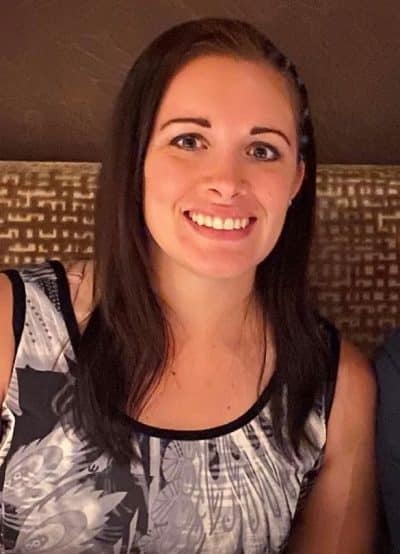
Nichole (2)
Nichole shares her blood clot experience connected to hormonal birth control.
When I was 20 years old I asked my doctor about birth control pills. She didn’t hesitate to write the script for me. Not knowing anything about my family history, personal risks, or potential harm, I started taking them. I am healthy, exercise, never smoked, and eat well. Seven years later, I came home from a day out riding my horse to what felt like a Charlie horse in my calf. Several days went by and it never went away. I started Googling symptoms, as I had heard about the risks for blood clots due to birth control. That afternoon, after a doctor’s visit and an ultrasound, I was diagnosed with a deep vein thrombosis or blood clot in my leg. At the age of 27, I was then put on blood thinners for six months. After about eight vials of blood for testing, I was diagnosed with factor V Leiden, a genetic blood clotting condition. Looking to my future and starting a family, there are so many risk factors that I never thought I would have to consider. Nevertheless, my journey continues, living as a blood clot survivor.
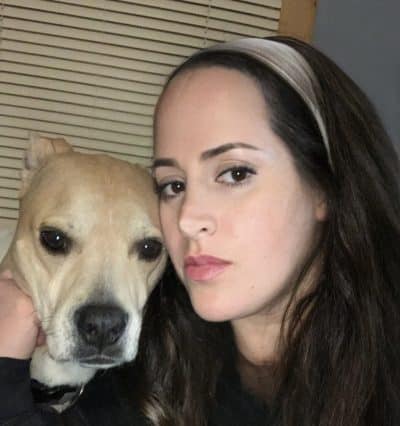
jenna kotch
Jenna tells her story of experiencing a blood clot and being diagnosed with a clotting disorder.
In March of 2015, I was living in Boulder, Colorado after the completion of my M.F.A. degree. I remember standing outside in the snow playing ball with my 140lb Anatolian Shepherd when I first began to notice sudden and quite alarming symptoms, including dizziness, profuse sweating, and searing chest pain. I called 911 and was rushed to the hospital, where I was later diagnosed with a pulmonary embolism or blood clot in my lung. I was subsequently admitted and immediately placed on an intravenous anticoagulant drip. Six days later, I walked out of the hospital forever changed. At that time, I was not only taking hormonal birth control but eventually decided to undergo genetic testing to determine if I had yet another contributing risk factor. My results yielded a positive diagnosis for Prothrombin (Factor II), a genetic blood clotting disorder. I was placed on an older anticoagulant pill for six months, followed by a daily intake of 81mg aspirin. Sadly, I experienced a deep vein thrombosis or blood clot in my right leg last year, in 2021, and was put on one of the newer anticoagulants for life. Through it all, I remain grateful.

photo (2)
Beckye recounts her experience with blood clots in her leg and lung.
I was a very active 35-year-old woman when I felt dizzy before, and then almost blacked out during, an intensive game of indoor soccer. I went to the doctor and after several months of testing they finally diagnosed me with blood clot in my leg and lung and I was admitted to the hospital. I had to cancel a lifetime trip to Africa and had chest pain for more than 6 months after the clot in my lung. I had an initial positive test for APS, or antiphospholipid syndrome, but after 9 months of treatment they retested and I was negative. I did have another clot in my leg eight years later, in 2018, and recovered from that. Birth control pills were my only known risk factor for clotting.
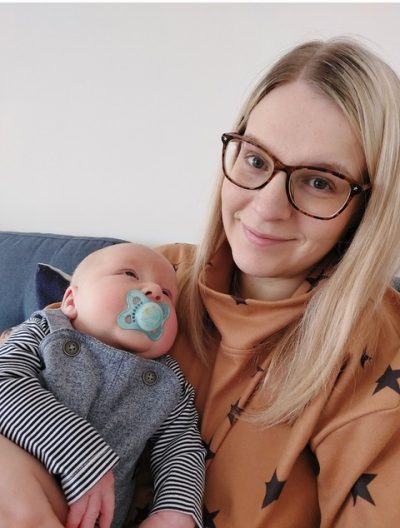
Mason_Alice 2022
Alice, from England, shares her blood clot experience following the birth of her son.
At five weeks following the birth of my son, I developed a headache. Initially I thought nothing of it, assuming it was probably just “new parent” fatigue. Throughout the evening and into the night, the severity of my headache increased, developing into what I thought was my first-ever migraine. I took several strong painkillers but nothing was touching it. Overnight I struggled to sleep and spent the vast majority of the following day in bed, still trying to sleep it off. Looking back, I remember being very clumsy with my right side, which I know now was a sign that something more serious was wrong.
The day rolled into another night and I hoped that the following day I would be back to normal. Unfortunately, when I woke up the next morning it was clear that instead of feeling better as I had expected, things were worse. I was struggling to use my right side, needing help from my husband to get out of bed and down the stairs. We decided to call for emergency help and transportation, but by this point I could no longer raise both hands above my head and couldn’t stand or move my right side independently and it became apparent that it would be quicker to go into A&E (hospital emergency department) ourselves.
When we arrived I was seen quickly and admitted for an MRI. When the doctors returned, I was told that I had a cerebral venous thrombosis (a blood clot on my brain). I was informed that the most likely cause was my pregnancy. I was later admitted to the Stroke Ward where I stayed for around two weeks. During my time in hospital, I had two seizures and for the first five days remained paralysed down my right side. I was put onto anti-seizure medication and blood thinners or anticoagulants. On day six of my hospital stay, I started to regain control of my fingers and toes, which was a very exciting moment. From that point on, I received daily physio and my physical recovery was fortunately rapid. I was discharged earlier than anticipated just in time for my first Mother’s Day with my little boy.
Since my discharge I have had many ups and downs. I have found it particularly challenging to overcome some of the mental stresses I have faced, including night terrors and extreme panic attacks. However, I feel so fortunate to be where I am today and am now experiencing many more good days than bad. I know that my recovery will take time and patience but when I look back to where I was just a few months ago I know that I have come such a long way.
I recently came across my post-labour discharge notes, where I noticed the words “risk of thrombosis.” In fairness, I was discharged from hospital with a ten-day supply of anticoagulant injections after my spinal anesthesia, however no one ever spoke to me about the risk for clots or signs to look out for. I would urge new mothers to ensure that they have read their discharge notes, speak up if they have any concerns, and ensure that they know the signs and symptoms of blood clots.
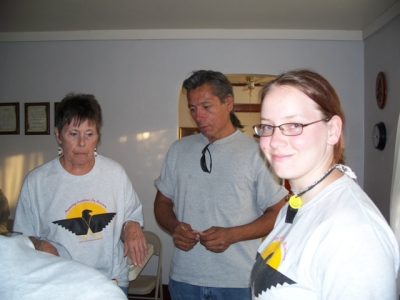
Thoughts on Alex
Thoughts about Alex Rowan by her Godmother, Sherry.
I remember exactly where I was when I received the awful news that Alex had died. As a home health nurse, I was in a patient’s home making a visit: My cell phone rang and it was my daughter calling. Concerned that it might be an emergency, I excused myself and went outside. My daughter asked if I had seen the Facebook post about Alex dying. I quickly read it, was shocked, and told my daughter that I’d call her back when I was finished with my visit. I did so in a state of disbelief.
I had been so excited when, in August 1990, I received a call from Dave, Alexandra’s father, letting me know that his wife Roz had given birth via C-section to a baby girl. She was over two months premature, but as Roz had developed problems, surgery had been necessary. Alex was tiny but it appeared that she’d survive.
I’ve known the Rowans since 1976 and knew all that they’d gone through to have a child; multiple tests, surgery, medications, and finally, a successful IVF course after prior failed attempts. I was overjoyed and honored to be named Godmother to Alex. I followed her life closely through her years of private school where she did well, pursuing extra activities. She didn’t date, but was a happy teenager. Her parents exposed her to many cultural events and she became a very mature lady.
I led mission trips to Rosebud Indian Reservation in South Dakota and Alex was a team member on several occasions. She helped raise funds for these trips at her church. On the Reservation she worked hard, helping with bible school, working on fundraisers for the locals, and helping with projects such as the renovation of an old church. She made poignant observations during her time there, and wished she could do more to help.
Montana and Yellowstone Park were favorite places for Alex to visit. She loved the wolves at the Grizzly and Wolf Discovery Center in West Yellowstone. She even ‘adopted’ a wolf to support the Center, and this love of wolves made it easy for me when birthdays or Christmas rolled around. Whenever her family and mine got together, lively games were in order, all of us enjoying it very much.
After Alex died I asked if I could scatter some of her ashes on Rosebud, and Dave also asked for some to be spread in Montana. I took them to the Reservation’s cemetery and scattered them over the grave of someone she knew who’d died, while an Indian friend said a prayer. I took some into Yellowstone Park and scattered them around favorite places. I also took some to the Wolf and Grizzly center and unobtrusively scattered ashes near the wolves’ enclosure. I buried more ashes near my condominium in Big Sky. Alex’s favorite color was purple, and a few days after burying her ashes, two small purple flowers bloomed above them.
I miss Alex and treasure my memories of the 23 years she blessed my life. Her pictures are displayed around my home; I especially like the one with Patrick, her dog. Even now, I still ask why, why only 23 years?

Alex Release Photo
Alexandra Rowan
With endless possibilities for a bright future, 23-year-old Alexandra Rowan, a University of Pittsburgh graduate with a double major in writing and communications, had what many young women just starting a new life dream about: A blossoming new career in a bustling and hip city, a loving family, a devoted boyfriend, a growing circle of friends, and an independent spirit that compelled her to travel and explore the wonders of the world all around her.
Sadly, however, Alexandra’s life ended suddenly, when she collapsed due to a massive pulmonary embolism, or blood clot, that had formed in her lung. Without warning the life of this beautiful young woman had ended, without any clear signal or advance warning that something was wrong.
Alexandra’s only known risk factor for blood clots was estrogen-based birth control.


